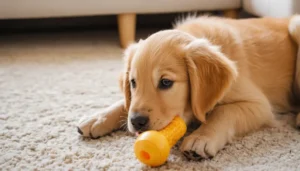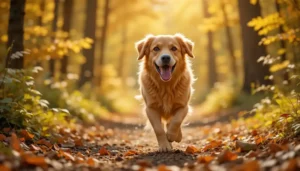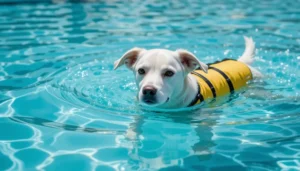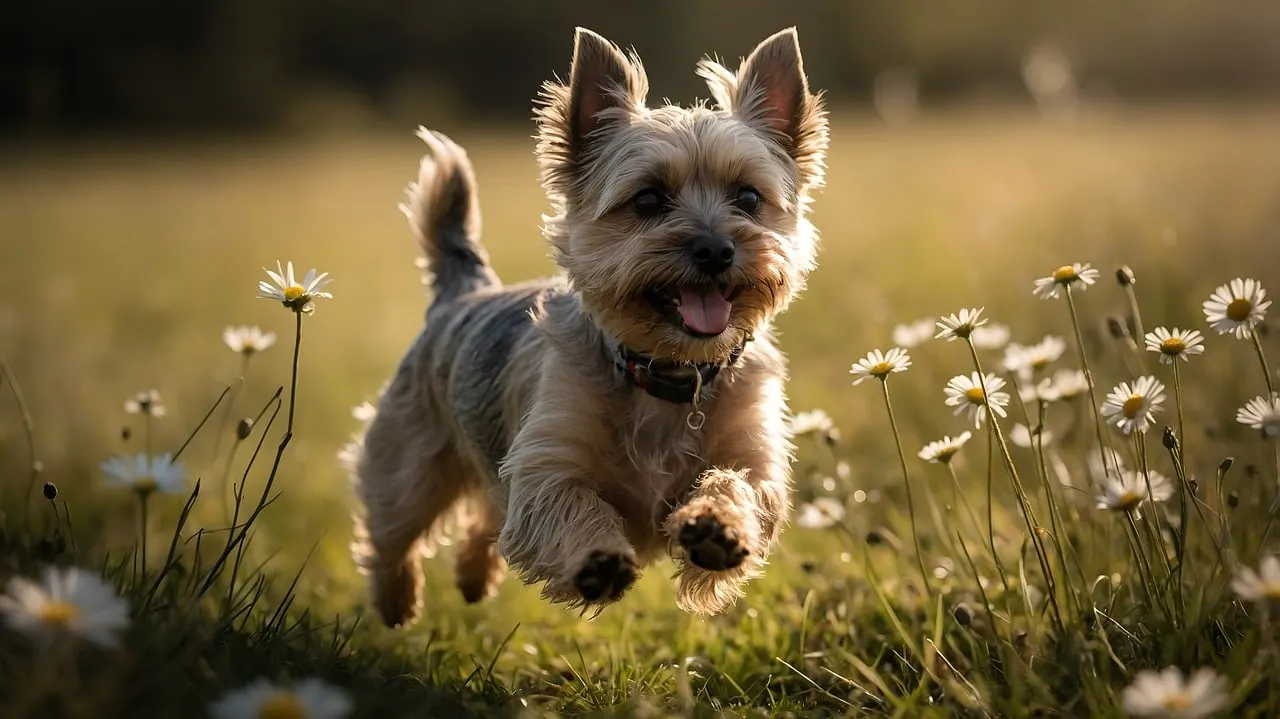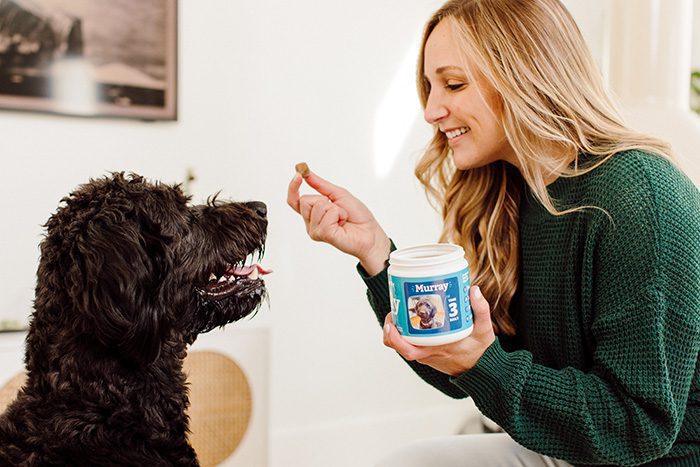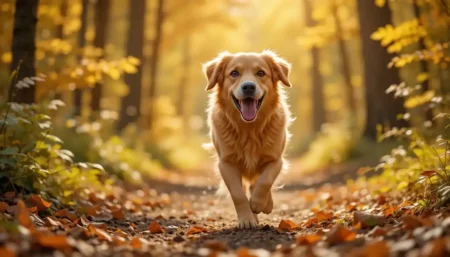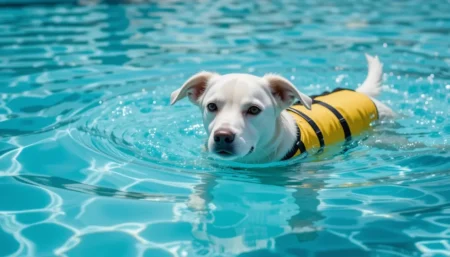The Cairn Terrier is a lively, compact terrier originally bred to hunt foxes in Scotland’s rugged hills. Known for its wiry coat, sharp intelligence, and big personality in a small frame, this breed thrives on daily exercise, mental challenges, and a balanced diet.
Our guide details health, grooming, training, and lifestyle tips to keep your Cairn Terrier happy and thriving.
Whether you’re a first‑time terrier parent or looking to refresh an existing routine, understanding the breed’s unique needs will help you avoid common pitfalls and enjoy a strong, rewarding bond.
History & Origin of the Cairn Terrier
The Cairn Terrier’s story begins on the misty, stone‑strewn hills of the Scottish Highlands, where hunters needed a fearless, hard‑working dog to chase foxes out of their burrows.
By the early 1800s, local farmers were breeding small, sturdy terriers that could navigate rocky terrain and work independently. These early dogs were known simply as “Cairn” dogs because they often sheltered in stone cairns—artificial piles of rocks used as landmarks.
- 19th‑century formalization: In the 1850s, the breed was refined and entered the first canine shows in England.
- Name adoption: The Kennel Club officially recognized the name “Cairn Terrier” in 1910.
- Modern popularity: Today, the Cairn Terrier is celebrated for its spunky character and appears in movies, books, and TV shows (think of the classic “Puss” from The Secret of NIMH).
The breed’s working heritage explains its high energy, keen sense of smell, and love of digging—traits that modern owners can channel into games and training.
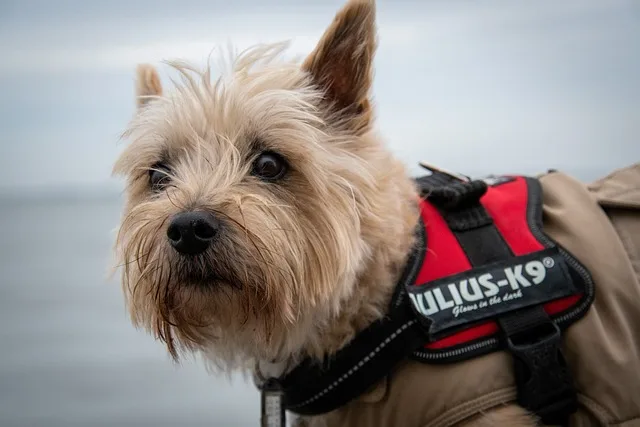
Physical Characteristics & Breed Standards of the Cairn Terrier
The Cairn Terrier’s compact build and rough coat give it a rugged yet adorable appearance. Understanding these physical standards helps owners spot health issues early and choose grooming tools that work best for the breed.
| Feature | Standard Range |
|---|---|
| Height (shoulder) | 9.5–10 in (24–25 cm) |
| Weight | 13–14 lb (5.9–6.4 kg) |
| Life expectancy | 12–15 years |
| Coat | Double coat – wiry outer guard, soft undercoat |
| Colors | Any solid color (black, brown, gray, cream, or red) or a mix of white with any of the solid colors |
Size and Weight
The breed is small but muscular; a well‑conditioned Cairn Terrier feels solid when you pick it up, yet it moves with the agility of a cat.
Maintaining a healthy weight is crucial because excess pounds can strain the joints, especially the hips and elbows, which are already predisposed to dysplasia in some lines.
Coat and Color
The wiry outer coat protects the dog from thorns and harsh weather, while the softer undercoat provides insulation.
Regular hand‑stripping or professional grooming keeps the coat from becoming matted and preserves the classic “weather‑proof” look.
Distinctive Features
- Head: Rounded skull with a short, broad muzzle.
- Eyes: Dark, almond‑shaped, giving an alert expression.
- Ears: Small, rose‑shaped, set high on the head.
- Tail: Carried proudly, usually low‑set but not curled over the back.
These physical traits, combined with a confident stance, make the Cairn Terrier instantly recognizable on the dog‑park runway.
Personality & Temperament of the Cairn Terrier
The Cairn Terrier’s personality packs a punch that far exceeds its size. Its spunky, independent spirit can sometimes be mistaken for stubbornness, but with consistent, positive guidance, the breed blossoms into an affectionate, eager‑to‑please companion.
- Bold and curious: Always ready to sniff out a new scent or investigate a strange object.
- Intelligent: Learns quickly, especially when reward‑based training is used.
- Loyal: Forms strong bonds with owners and often follows them from room to room.
- Playful: Loves interactive games like fetch, tug‑of‑war, and puzzle toys.
- Territorial: May act as a small watchdog, alerting you to strangers with a confident bark.
Because the Cairn Terrier is both social and independent, early socialization is essential to keep it from becoming overly wary of new people or animals.
A well‑socialized Cairn Terrier will be confident in a variety of situations, from city apartments to country farms.
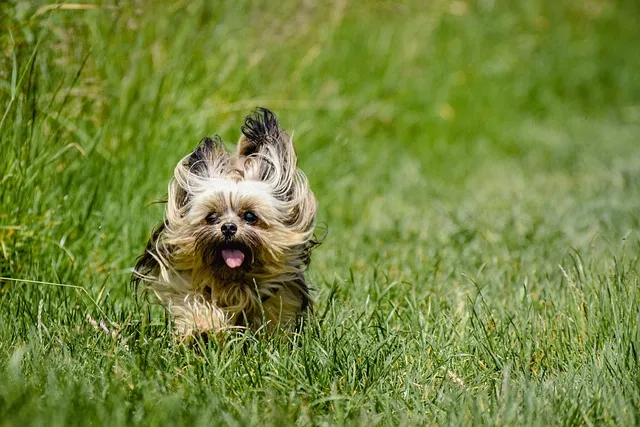
Exercise, Play, and Energy Needs for Cairn Terriers
The Cairn Terrier is a high‑energy breed that needs daily physical and mental stimulation to stay healthy and happy. Without an adequate outlet, the dog may develop destructive habits such as chewing furniture or excessive digging.
Daily Exercise Guidelines
- Morning walk (30 min): A brisk walk or jog on varied terrain satisfies the breed’s love of scent work.
- Mid‑day play session (15 min): Interactive games like fetch, hide‑and‑seek, or a tug rope.
- Evening mental workout (10‑15 min): Puzzle feeders, scent‑tracking games, or basic obedience drills.
Play Activities Your Cairn Terrier Will Love
- Agility hurdles: Small jumps or weave poles (adjust height to 6‑8 in).
- Scent trails: Hide treats around the yard and let the terrier follow the nose.
- Water fun: A shallow kiddie pool can be a refreshing splash, but make sure the dog can exit safely.
Tips to Prevent Over‑Exertion
- Monitor breathing: a healthy Cairn Terrier should have a steady rhythm after a few minutes of rest.
- Keep hydration handy, especially during warmer months.
- Adjust exercise intensity for senior dogs or those with joint concerns—shorter, slower walks are fine.
Providing a balanced mix of aerobic activity, strength work, and brain games will keep your Cairn Terrier fit, content, and well‑behaved.
Nutrition & Feeding Guidelines for Cairn Terriers
A balanced diet fuels the Cairn Terrier’s active lifestyle and helps preserve its lean muscle mass. Because the breed’s size is small but its metabolism is fast, portion control is essential to avoid weight gain that could stress the joints.
Daily Calorie Requirements
| Activity Level | Approx. kcal per day (per 10 lb) |
|---|---|
| Low (senior, indoor) | 350–400 |
| Moderate (daily walks) | 450–500 |
| High (agility, working) | 560–620 |
Example: A 13‑lb Cairn Terrier with moderate activity needs roughly 450–500 kcal per day.
Recommended Feeding Schedule
- Puppies (8‑12 weeks): 3–4 meals/day, ½ cup kibble each, adjusted for growth.
- Adult dogs: 2 meals/day, split evenly; most owners find 1 cup dry kibble (or equivalent) works well.
- Seniors (10 + years): 1½ meals/day; calorie reduction helps maintain ideal weight.
Types of Food
| Food Type | Pros | Cons |
|---|---|---|
| High‑quality dry kibble | Convenient, dental benefits | May contain fillers |
| Fresh‑food diet (raw or cooked) | Natural ingredients, higher protein | Requires careful balancing |
| Limited‑ingredient formulas | Good for sensitivities | Can be pricier |
Supplements (Optional)
- Glucosamine & chondroitin: Supports joint health, especially for active or older dogs.
- Omega‑3 fatty acids (fish oil): Improves coat sheen and reduces inflammation.
- Probiotics: Helps maintain gut health, especially after antibiotics.
Feeding tip: Measure food with a standard cup or kitchen scale and adjust portions based on body‑condition score (BCS). A BCS of 4–5/9 indicates an ideal weight for a Cairn Terrier.
Grooming, Bathing, and Coat Care for the Cairn Terrier
Although the Cairn Terrier’s wiry coat is low‑shedding, regular grooming keeps it tidy, reduces odor, and prevents skin problems. The breed’s coat also benefits from occasional hand‑stripping to preserve its texture.
Grooming Schedule
| Task | Frequency | Details |
|---|---|---|
| Brushing (wire brush) | 2‑3 × /week | Removes loose hair, prevents mats. |
| Hand‑stripping (or professional) | Every 6–8 weeks | Pulls out dead coat, keeps coat wiry. |
| Bathing (dog‑safe shampoo) | Every 4–6 weeks or as needed | Use lukewarm water; dry thoroughly. |
| Nail trimming | 3–4 × /month | Prevents splitting; watch for quick. |
| Dental cleaning | 2‑3 × /year (vet) | Brush teeth weekly with canine toothpaste. |
| Ear cleaning | Weekly | Wipe with a cotton ball and vet‑recommended solution. |
Coat‑Care Tips
- Avoid over‑bathing. Too many baths strip natural oils, leading to dry skin.
- Use a slicker brush for the undercoat. This reduces tangles before hand‑stripping.
- Check for hot spots. Small red patches may indicate irritation; treat promptly.
Bathing Procedure
- Prep: Place a non‑slip mat in the tub; gather shampoo, towel, and a cup for rinsing.
- Wet: Use lukewarm water, wet coat gently from neck down.
- Lather: Apply a small amount of dog‑specific shampoo, and massage it into the skin.
- Rinse: Thoroughly rinse to avoid residue that can cause itching.
- Dry: Pat dry with an absorbent towel, then use a low‑heat blow dryer if the dog tolerates it.
Consistent grooming not only keeps your Cairn Terrier looking sharp but also provides a bonding opportunity that builds trust.
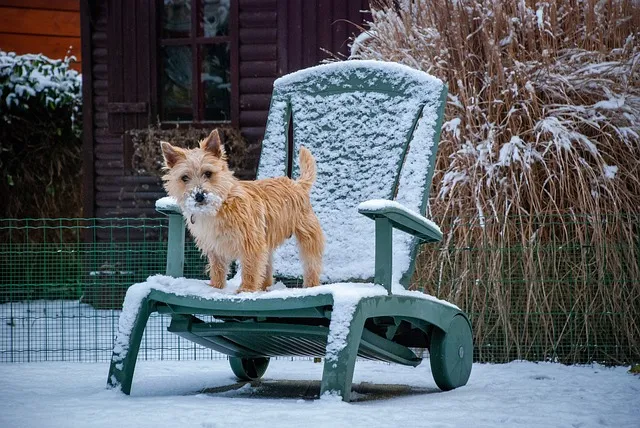
Training, Socialization, and Mental Stimulation for Cairn Terriers
Because the Cairn Terrier is smart and eager to please, positive‑reinforcement training works best. Early socialization, coupled with mental challenges, prevents boredom‑driven mischief and strengthens the human‑dog bond.
Step‑by‑Step Training Guide
- Establish a cue word: Choose a simple word like “Yes” for positive reinforcement.
- Use high‑value treats: Small pieces of cooked chicken or commercial soft treats work well.
- Keep sessions short: 5‑10 minutes, 2–3 times a day, to match the breed’s attention span.
- Practice one command at a time: Start with “Sit,” then add “Stay,” “Come,” and “Leave it.”
- Gradually add distractions: Practice commands in the yard, then in a park, then at home with toys around.
Socialization Checklist
- Puppy classes (8‑14 weeks): Controlled environment with other puppies.
- Public places: Walk on a leash in busy streets, exposed to cars and bikes.
- Different people: Invite friends of various ages and appearances for brief visits.
- Other animals: Supervised introductions to calm dogs and cats once the terrier shows reliable recall.
Mental Enrichment Ideas
- Puzzle toys: Kong® filled with frozen peanut butter or a treat‑ball that rolls.
- Scent work: Lay a trail of treats on a towel and let the dog follow.
- Training games: “Find it” (hide a toy) and “Target” (touch a specific object).
Consistency, patience, and plentiful praise keep the Cairn Terrier motivated and well‑behaved, turning its natural intelligence into a delightful partnership.
Health Concerns & Veterinary Care for Cairn Terriers
Overall, the Cairn Terrier enjoys robust health, but several hereditary conditions can affect the breed. Early detection and preventive care are the best ways to ensure a long, active life.
Common Health Issues
| Condition | Typical Signs | Preventive Measures |
|---|---|---|
| Patellar luxation (slipping kneecap) | Skipping gait, “clicking” sound when walking | Daily tooth brushing, dental chews, and annual vet cleaning |
| Hip dysplasia | Reduced mobility, difficulty rising | Hip X‑rays for breeding lines, controlled exercise |
| Allergic skin disease | Itching, redness, hot spots | Regular grooming, hypoallergenic diet, vet‑prescribed meds |
| Dental disease | Bad breath, tartar, gum recession | Genetic testing for breeding dogs keeps the dog safe from hazards once vision declines. |
| Progressive retinal atrophy (PRA) | Night blindness, gradual vision loss | Genetic testing for breeding dogs keeps the dog safe from hazards once vision declines. |
Veterinary Care Routine
- Puppy vaccinations: DHPP (Distemper, Hepatitis, Parvovirus, Parainfluenza) and Rabies at 8, 12, and 16 weeks, then boosters annually.
- Heartworm & flea/tick prevention: Monthly medication year‑round, especially in warm climates.
- Annual wellness exam: Physical exam, blood work, and screening for hip dysplasia if a history exists.
- Dental check: Cleanings at least once a year, plus home brushing.
- Weight monitoring: Use a body‑condition chart; aim for a BCS of 4–5/9.
Keeping a health log—tracking vaccinations, deworming dates, and any observed changes—helps the veterinarian spot trends early and adjust care plans accordingly.
Home Environment, Space Requirements, and Living Arrangements for Cairn Terriers
Despite their rugged origins, Cairn Terriers adapt well to various living situations, from city apartments to country homes. The key is providing a safe, stimulating environment that meets their activity and mental needs.
Space Guidelines
- Indoor area: A comfortable crate or bed in a quiet corner; at least 3 sq ft of floor space for lounging.
- Outdoor access: Secure, fenced yard where the dog can sniff and explore; a small agility tunnel or playpen adds variety.
- Stair safety: If you have stairs, use a ramp or low‑step entry for senior dogs to protect joints.
Home Safety Tips
- Secure trash cans: Cairns are curious and may rummage for food.
- Remove choking hazards: Small toys, cords, or socks should be kept out of reach.
- Provide a “quiet zone”: A dog‑proof room where the terrier can retreat when overstimulated.
Apartment Living
- Exercise: Supplement indoor play with multiple short walks (15‑20 min) and a midday park visit.
- Noise: The Cairn Terrier’s bark can be loud; basic “quiet” command training helps control excessive barking.
Rural Living
- Explore safely: Install a sturdy fence at least 4 ft high; cover the base to prevent digging.
- Weather protection: Provide a dry, insulated shelter for outdoor time during rain or snow.
Regardless of setting, a consistent routine, mental stimulation, and safe boundaries will keep your Cairn Terrier comfortable and well‑behaved.
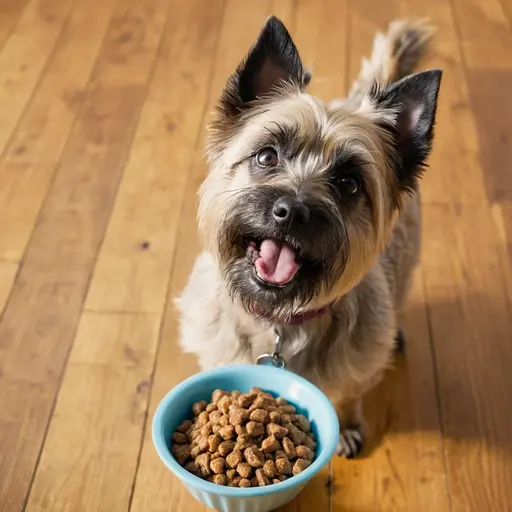
Travel, Boarding, and Outdoor Adventures with Cairn Terriers
The Cairn Terrier loves to accompany its family on trips, but preparation ensures the adventure remains safe and enjoyable for both dog and owner.
Car Travel
- Secure the dog: Use a crash‑tested crate or a seat belt harness.
- Breaks every 2–3 hours: Allow the terrier to stretch and relieve itself.
- Hydration: Offer water at stops; never leave the dog unattended in a hot car.
Air Travel
- Choose a carrier: Must meet airline size limits (typically 18 × 11 × 9 in).
- Acclimate early: Let the dog spend time in the carrier before the flight.
- Health paperwork: Provide a recent health certificate (within 10 days of travel).
Boarding
- Visit first: Tour the facility to ensure it’s clean, staff are knowledgeable, and dogs are exercised regularly.
- Bring familiar items: A favorite blanket or chew toy reduces stress.
Outdoor Adventures
- Hiking: Keep the terrier on a short leash in steep terrain to protect its paws.
- Water activities: A life jacket is advisable; Cairns dislike deep water but love splashing in shallow streams.
- Camping: Use a portable dog tent or crate; maintain a routine feeding and potty schedule.
Preparing for travel in advance protects your Cairn Terrier’s health and lets you focus on making happy memories together.
Choosing a Reputable Breeder or Rescue for Your Cairn Terrier
Finding a responsible source for a Cairn Terrier is vital to ensure the dog’s health, temperament, and proper socialization.
Breeder Red Flags
- No health testing: No hip, eye, or genetic screening results.
- Multiple litters per year: Indicates a “puppy mill” rather than a dedicated breeder.
- Lack of contract: No written guarantee or return policy.
What a Good Breeder Provides
- Health certificates: OFA (Orthopedic Foundation for Animals) or PennHIP results, and CERF eye exams.
- Early socialization: Puppies are exposed to various sounds, surfaces, and gentle handling.
- Parent exposure: Ability to meet both sire and dam; observe their temperament.
- Support: Ongoing advice on nutrition, training, and veterinary care.
Rescue Organizations
- Breed‑specific rescues: Many Cairn Terrier rescues have dogs of all ages, from puppies to seniors, often already house‑trained.
- Adoption process: Usually includes a questionnaire, home visit, and a small adoption fee that covers spaying/neutering and microchipping.
Adoption Checklist
| Item | Why It Matters |
|---|---|
| Health records | Verify vaccinations, deworming, and any prior conditions. |
| Temperament assessment | Ensures the dog’s personality fits your lifestyle. |
| Compatibility interview | Helps match energy level and experience with the dog. |
| Return policy | Guarantees the dog’s welfare if the match fails. |
Whether you purchase from a breeder or adopt from a rescue, ask for documentation, observe the dog’s behavior, and trust your instincts. A well‑sourced Cairn Terrier will be a lifelong companion.
FAQs
How much exercise does a Cairn Terrier need each day?
A Cairn Terrier typically requires 30–45 minutes of moderate activity—such as a brisk walk, interactive play, or puzzle games—plus short mental‑stimulation sessions to keep it happy and well‑behaved.
Does the Cairn Terrier shed a lot?
The breed has a wiry, low‑shedding coat, but it does lose hair during “blowing” seasons (twice a year). Regular brushing and occasional hand‑stripping keep shedding under control.
Are Cairn Terriers good with children?
Yes, when properly socialized. Their playful nature and sturdy build make them tolerant of gentle kids, but supervision is still important because they can be boisterous.
What are the most common health problems for Cairn Terriers?
Patellar luxation, hip dysplasia, skin allergies, dental disease, and progressive retinal atrophy (PRA) are the most frequently reported issues. Routine vet check‑ups and weight management help reduce risk.
Can a Cairn Terrier live in an apartment?
Absolutely. As long as the terrier receives daily walks, regular playtime, and mental enrichment, it adapts well to apartment living. Just be mindful of barking training and provide a safe indoor space.
Conclusion
Caring for a Cairn Terrier blends the joy of a spirited, intelligent companion with the responsibility of meeting its high‑energy, grooming, and health needs.
By providing appropriate exercise, a balanced diet, regular coat maintenance, and consistent positive training, you’ll nurture a well‑rounded terrier that thrives in any setting—whether a bustling city loft or a spacious country home.
Choose a reputable breeder or rescue, stay on top of veterinary care, and keep mental enrichment at the forefront of daily routines.
Your actionable takeaway: start a weekly “Cairn Terrier care checklist” that covers exercise, feeding, grooming, and health checks—checking it each Sunday ensures you never miss a beat and your terrier enjoys a vibrant, healthy life by your side.
